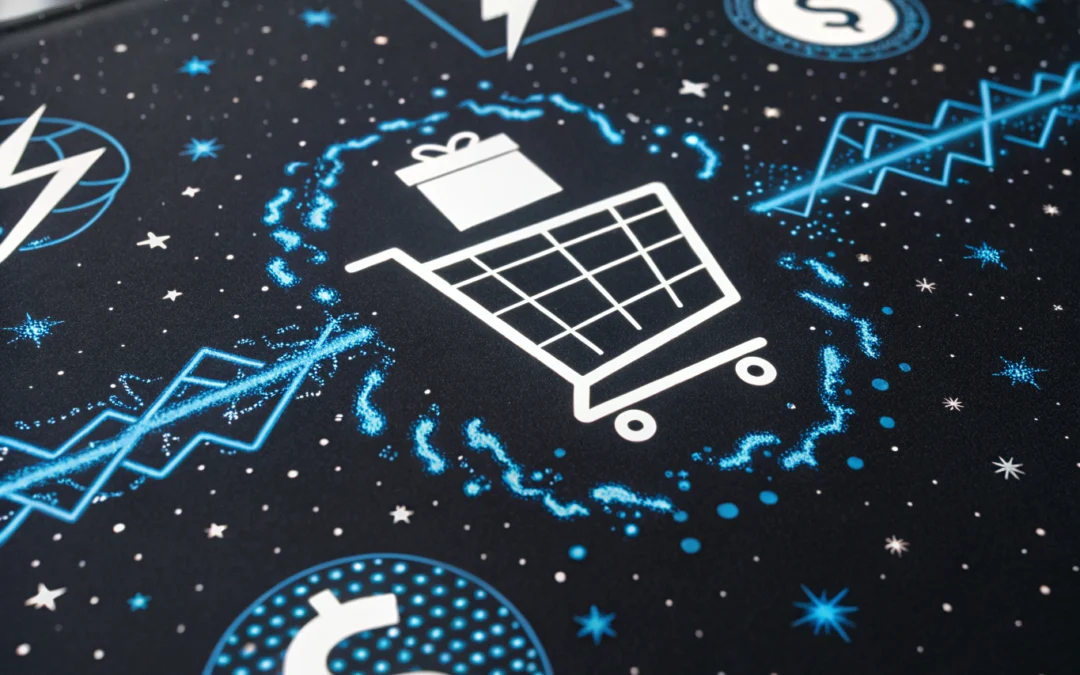A Newbie’s Guide to Selling on Amazon: Setting Up Your Digital Shop
Amazon, the behemoth of online retail, seems like a daunting arena for new sellers, especially when comparing selling on Walmart vs Amazon. The sheer volume of its marketplace can feel like navigating an intergalactic bazaar. But fear not, intrepid entrepreneur; even the most complex of spaces have accessible entry points. If you’re wondering what can I sell on Amazon as a new seller, you’re not alone. Many are intrigued by the allure of tapping into Amazon’s vast customer base.
Choosing the Right Product Category
Starting out means making decisions, and one of the most critical is what to sell. At the heart of this decision lies the product category. It’s akin to choosing your ship for a voyage. Some categories have more relaxed entry requirements, like home goods or fitness equipment. Others, such as electronics or groceries, require permission to sell—Amazon’s version of a galactic passcode.
Understanding Fulfillment by Amazon (FBA)
Now, here’s where things get interesting. Fulfillment by Amazon (FBA) is the platform’s secret sauce, an AI-powered logistics network that handles storage, shipping, and customer service for you. Imagine having a fleet of robotic interns managing your logistics. But beware, it comes at a cost—storage fees, fulfillment fees, and the occasional AI hiccup. However, the convenience often outweighs these costs, especially for those who’d rather focus on product development and marketing. For a different kind of marketing boost, you might want to make your Instagram pop with these 90s phrases terms.
Private Label versus Reselling
Deciding between creating your own brand or reselling existing products is like choosing between writing your own sci-fi novel or selling someone else’s. Private labeling offers the allure of brand ownership and higher profit margins, but it requires more initial work, like product design and manufacturing. Reselling is less labor-intensive to start but involves fierce competition and often thinner margins.
Regulations and Compliance
Amazon is a universe with rules of its own. Categories like toys and jewelry have specific safety standards and regulations. Before setting sail, familiarize yourself with these compliance requirements. Failing to do so can lead to account suspensions or worse, product recalls. It’s always better to have your interstellar paperwork in order than to face bureaucratic black holes.
Product Research and Market Analysis
In the world of Amazon selling, knowledge is your hyperdrive. Use competitor intelligence software to dig into product demand, competition, and pricing strategies. This is where AI shines, helping you analyze vast amounts of data quickly. Think of it as your personal droid, capable of parsing through cosmic data streams to find opportunities others might miss.
How to Sell Stuff on Amazon: What New Sellers Need to Know
Selling stuff on Amazon is one of the most accessible ways to enter e-commerce, thanks to Amazon’s massive customer base and fulfillment infrastructure. For new sellers, the platform offers several business models, from reselling to private labeling and dropshipping. This guide outlines how to get started, what products to consider, and how Amazon compares to other platforms.
How to Sell Your Products on Amazon
Amazon makes it easy to launch your product listings, even with minimal experience. After setting up an Amazon Seller Central account, sellers can create listings, manage inventory, and choose between Fulfilled by Amazon (FBA) or self-shipping. Sellers looking to learn how to sell on Amazon without inventory can benefit from FBA or dropshipping arrangements.
Steps to get started:
- Register for an Amazon Seller Central account (Individual or Professional)
- Choose a fulfillment method (FBA or FBM)
- Research product ideas using keyword tools or Amazon trends
- Create a product listing with quality images and optimized descriptions
- Set competitive pricing based on how much Amazon takes from sellers
- Monitor performance through Amazon’s seller dashboard and analytics
Product Ideas for New Amazon Sellers
The right product ideas can determine your store’s success. Many new sellers focus on trending products on Amazon or niche items with consistent demand. Start with categories like health, home, pet accessories, and tech accessories, where competition is moderate and demand is stable.
Here are some proven product types:
- Phone accessories (cases, screen protectors)
- Reusable kitchenware (storage containers, silicone bags)
- Pet grooming tools
- Fitness bands and home gym gear
- Niche hobby products (arts and crafts, planners)
Understanding Amazon Fees: How Much Does Amazon Take from Sellers?
Amazon’s seller fees vary by category and fulfillment method. On average, sellers pay a referral fee of 8% to 15%, and additional fees apply if you use FBA services. Understanding how much Amazon takes from sellers helps you price products correctly and manage profit margins.
How to Resell Items on Amazon
Reselling involves sourcing products from retail stores, wholesalers, or clearance outlets and listing them on Amazon for a profit. It’s a common strategy for those just starting or learning how to resell items on Amazon with low risk. Tools like Amazon’s Seller App can help scan products for profitability while sourcing.
Steps for reselling on Amazon:
- Visit local retail stores, liquidation outlets, or online wholesalers
- Use the Amazon Seller App to scan product barcodes for pricing and demand
- Check for brand restrictions and product eligibility
- List the item on Amazon under an existing ASIN (product detail page)
- Price competitively and choose your fulfillment option
- Package and ship items directly or send them to an FBA warehouse
Comparing Amazon to Other Platforms
This section explores how Amazon stacks up against other online marketplaces like eBay and Shopify. Each platform offers unique benefits depending on your selling strategy, customization needs, and scalability goals.
| Feature | Amazon | eBay | Shopify |
|---|---|---|---|
| Customization Options | Minimal storefront customization | Moderate store design via eBay Store | Full storefront design and theme control |
| Ease of Use | User-friendly dashboard with learning curve | Simple listing setup, less automation | Drag-and-drop interface, ideal for beginners |
| Integration | Limited third-party apps, strong native tools | Some integrations, relies on manual workflows | Integrates with thousands of apps and tools |
| Scalability | Access to millions of shoppers, but high competition | Can scale with niche products and loyal buyers | Easily scales with plugins and third-party logistics |
| Inventory Handling | Offers FBA for hands-off shipping | Manual or third-party fulfillment | Full control or partner with fulfillment tools |
Exploring Amazon Trends and Most Purchased Items
Keeping an eye on amazon trends can help sellers identify opportunities. Regularly monitoring Amazon’s Movers & Shakers, Best Sellers, and customer reviews provides insight into consumer behavior. Sellers can discover the most purchased items on Amazon and quickly adapt their listings.
Useful tools to explore trends:
- Amazon Best Sellers and Hot New Releases
- Helium 10 and Jungle Scout product trend tools
- Google Trends paired with Amazon data
Selling Stuff on Amazon Without Holding Stock
For those aiming to start small, there are methods to sell without holding inventory. Fulfilled by Amazon (FBA) lets Amazon handle storage and shipping, while dropshipping connects you with suppliers who ship directly to the customer. These models simplify logistics and are ideal for new entrepreneurs who want to learn how to sell on Amazon without inventory.
Actionable Recommendations
- Start small. Choose an easy-to-enter category to learn the ropes without the pressure of fierce competition.
- Lean on FBA to handle logistics, allowing you to focus on scaling your business.
- Regularly review Amazon’s compliance requirements to avoid costly setbacks.
- Invest in robust product research tools to stay ahead of market trends.
- Consider both private labeling and reselling. Diversification might be your best bet.
Remember, selling on Amazon is less about conquering a marketplace and more about finding your niche within it. With the right strategy and a willingness to adapt, you’ll find yourself not just surviving but thriving in this expansive digital cosmos.
Checkout ProductScope AI’s Studio (and get 200 free studio credits)

